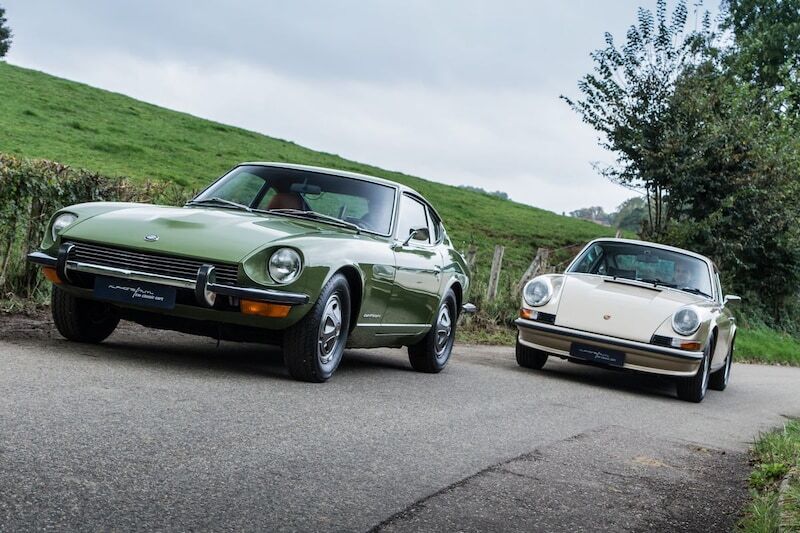
Datsun launched the 240Z in 1969 as an affordable alternative to the respected European and American sports car elite. It even challenged the Porsche 911, promising its performance at a fraction of the cost. How do we view the two rivals fifty years later?
A group of American Datsun dealers argued at their headquarters in Japan that the time had come for a sporty Datsun, as a counterpart to the somewhat bland tin boxes that the brand shipped to the US in large numbers. After all, imported sports cars were well spent on American buyers, who indulged in MGs, Jaguars, Austin-Healeys, and Porsches, among others. Although Japanese brands were not at all averse to a sporty model here and there, the range initially remained limited to a handful of expensive Toyota 2000GTs and, a segment lower, the Datsun Sports 1600 and 2000, both of which manifested themselves as copies of the MGB. Furthermore, Honda, among others, built a series of minuscule sports cars, such as the S800, which were far too small to serve as an alternative to a Jaguar or Porsche. In short, those American dealers had a point: there was room in the market!
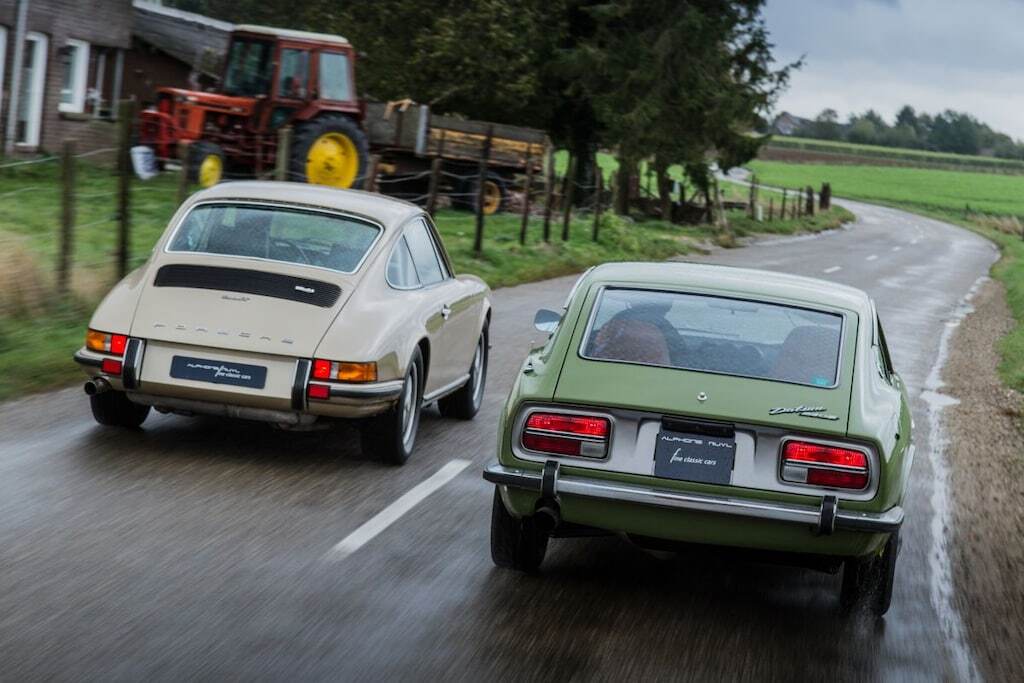
Datsun 240Z had to become a kind of Jaguar E-Type
The new Datsun sports car had to become a kind of Jaguar E-Type, but with the size of a Porsche 911 and the price tag of an MGB. Datsun saved itself the trouble of developing a convertible, because the American safety requirements for that car genre were unspeakably stricter than for closed vehicles. So it had to be a coupé, with a thick six-cylinder in the front, rear-wheel drive, a cabin for two people, and a large luggage compartment. By using as many components from its own inventory as possible, the first step towards a low cost price was taken.
In Japan it was called Nissan Fairlady Z
The second step was significantly larger: the design. They had never chopped at sports car level with this axe in Tokyo before. In general, the design of the 240Z is attributed to designer Graf Albrecht Goertz, but a nuance is in order here. Goertz did work on a sports car for Datsun and Yamaha from 1963 to 1965, but this project was parked in a Japanese freezer at the time, only to emerge ice-cold at competitor Toyota a few years later as a blueprint for the 2000GT. Anyway, Datsun also thawed out Goertz’s ideas, and used them to co-design the desired sports car. They called the car Nissan Fairlady Z for the local market; the rest of the world would get to know him (or her) as Datsun 240Z.
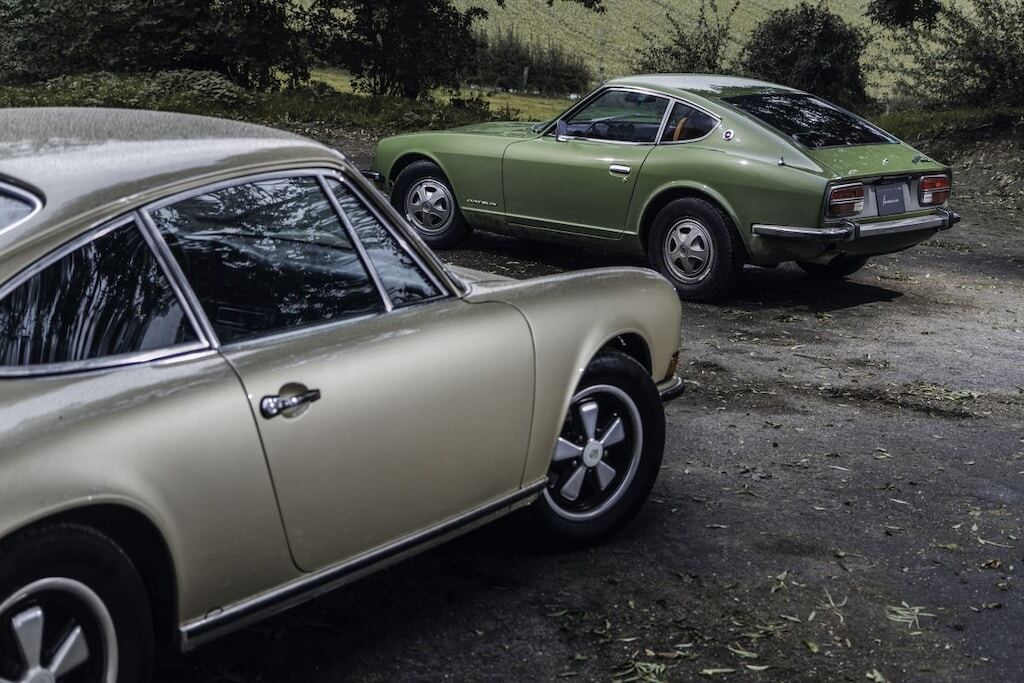
Datsun was irresistible offer
The Datsun 240Z came, saw and overwhelmed everything it encountered in the way of sports cars. To speak of a trail of destruction may be going too far, but it should be clear that the clever Japanese car was exactly the fun package that American buyers were waiting for. The 240Z eagerly dived into the gaping hole that the British car industry had left behind after the disappearance of Austin-Healey. The Datsun was simply an irresistible offer. Also for Dutch enthusiasts. A price list from 1973 actually tells the whole story: the 240Z, standard equipped with a 2.4-liter six-cylinder with 150 hp, cost 21,500 guilders. The equally large, but significantly slower MGB GT (1.8-liter four-cylinder, 95 hp) was not even much cheaper at 17,600 guilders, while the Porsche 911T 2.4 (130 hp), at 33,400 guilders, was no less than one and a half times as expensive as the Datsun. In short, with the favorable ratio between price and performance that Datsun had in mind with the 240Z, it was fine on paper. And in practice? Also, according to the sales results. Between 1969 and 1973, a good 160,000 were delivered. By comparison: Porsche sold about a third of that number of 911s in the same period. No wonder with such large price differences, we say now. Know that the production capacity at Nissan, the producer of Datsun, has never been able to keep up with the pace of the ever-growing demand for the 240Z. In other words: the Japanese could have sold many more copies of their beloved sports car, had the manufacturer not clung to a hopelessly inefficient production process for too long. The enormous success of the car had completely surprised them.
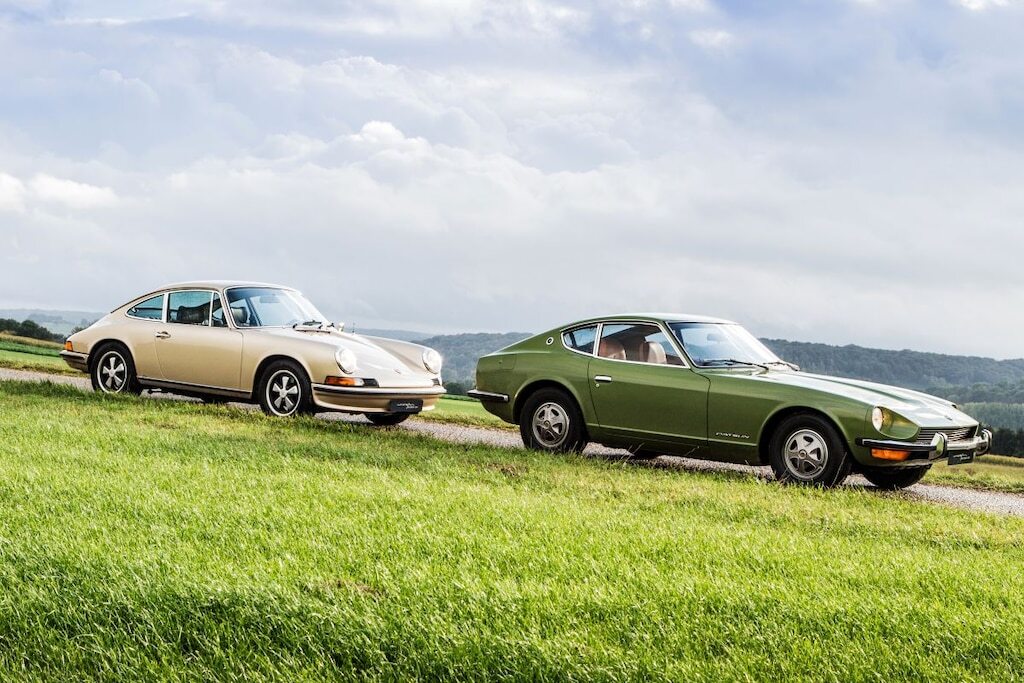
240Z a rare appearance due to low preservation rate
Despite the large production number, the 240Z has become an extremely rare appearance – a characteristic fate for many classics that were once built in large numbers and of which the ‘preservation rate’ was low at the time. It is not easy to get hold of a beautiful, original and unrestored example. This fact makes the confrontation with the light green example from 1973 from this story all the more special. Its opponent is a no less original Porsche 911T 2.4 from the same year of construction. This extensive test takes us criss-cross through the beautiful, wonderfully hilly South Limburg. The ease with which the 911T drove away from the 240Z was repeatedly shocking. Certainly given the fact that power and torque are at a comparable level, and both cars weigh the same (around 1,050 kg). However, the Datsun driver had no illusion of being able to keep up with a 911, knowing that there are few cars that start as quickly as Porsches with the engine in the back. Characteristic of the 2.4-liter engine is also the increased torque compared to the previously delivered 2.0 and 2.2-liter versions. The increased displacement benefited the bore entirely and not the stroke, making the 2.4 the first oversquare 911 engine (84 x 71 mm). This is always a good recipe for extra traction.

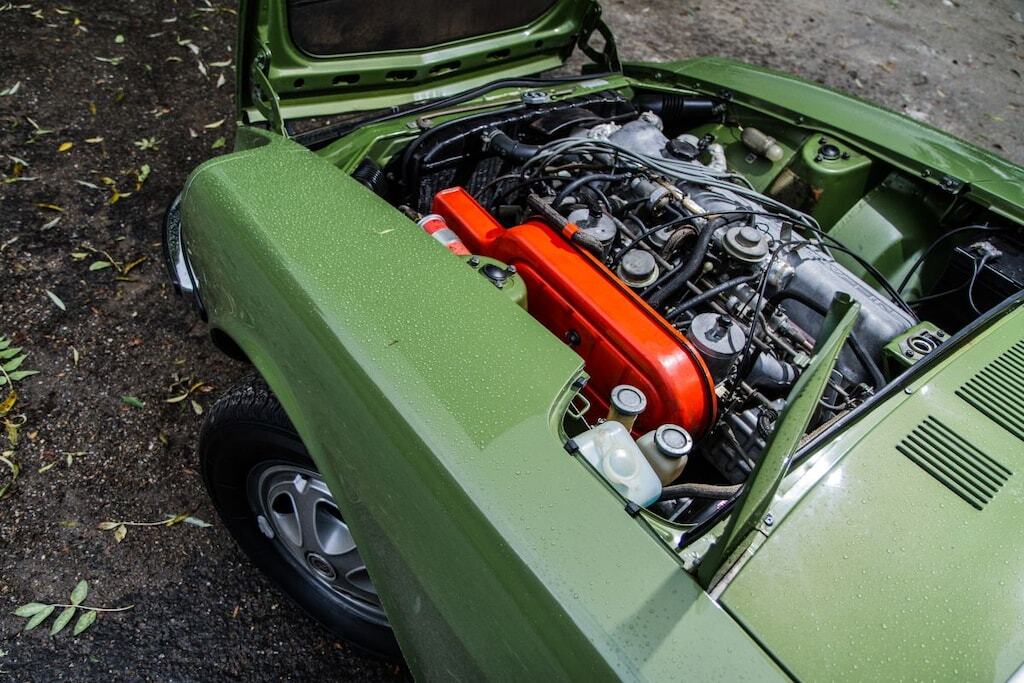
This Porsche 911 has the optional five-speed gearbox
With the Datsun we see similar ratios (83 x 73 mm), so you can expect an equally hard push in the back. The strange thing is that this largely fails to materialize, so an explanation of the difference in performance must be sought in the chosen gear ratios. The Porsche has the advantage of an extra gear, because the first owner of the car made the wise decision to order the optional five-speed gearbox. Yes, a 911 once had four gears as standard! Just like the Datsun, by the way, which is competing here with a four-speed gearbox. It is a very fine gearbox, which, just like with a British sports car, requires quite a bit of force, but in return provides pleasantly short and tight movements of the gear lever. The steps that the 240Z makes are just very long. On secondary roads, up to speeds of 80 to 100 km/h, you as a driver can just leave the fourth gear for what it is, because you only feel sufficient traction under the accelerator pedal in third gear – especially when climbing slightly. Because of that craving for revs, the absence of the fifth gear in the Datsun is not a loss, even at higher speeds. The fact that the engine roars louder and louder with joy as the rev counter needle climbs is only fun, because the six-cylinder inline engine produces a beautiful, deep growl. The six-cylinder is built according to a design by Mercedes-Benz from the sixties; the Japanese manufacturer Prince had a license for it and after the merger with Nissan, the engine was free to find its way to, among others, the 240Z. The test car was missing one of the intermediate mufflers in the exhaust system, which made the car too loud for the outside world, even for the beautiful. It drowned out the naturally not exactly quiet 911 by an estimated factor of 3. That loud.
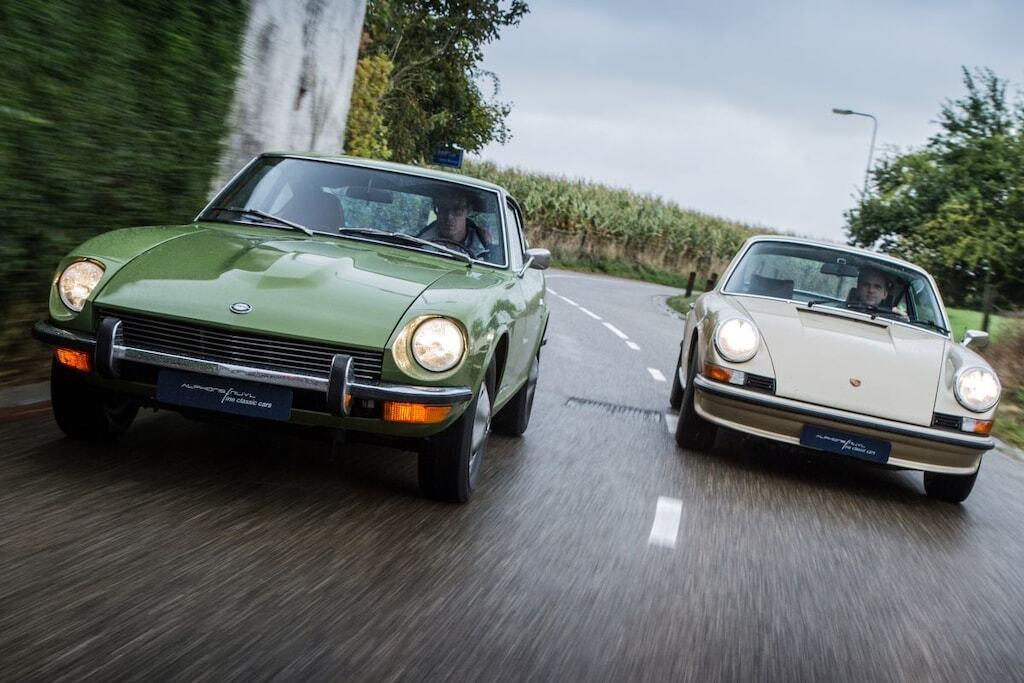
911 faster and easier to operate
The 911 is clearly faster than the Datsun in practice, as our extensive, double test drive shows. Crawling-through-slipping-through-driving reveals another important advantage for the 911 pilot over his 240Z colleague, and that is the much lighter operation of the car. A 911 certainly does not have an easy-shifting gearbox, but the example in this 911T is much easier to operate than the four-speed gearbox of the Datsun. An even bigger difference between the two cars is due to the steering, which is really quite heavy in the Datsun and feather-light in the Porsche. Not surprisingly, because it is a direct result of the positioning of the engine. The Porsche lets its light nose turn into a bend wonderfully quickly, while the more understeering Datsun first asks for some thinking time and then reacts. Contrary to what the specifications say, the Datsun feels like a lead-heavy car to drag through the bend, while the leaning is not much stronger than with the 911. The heavy steering and the massive exhaust noise probably create a distorted image, which makes the Datsun seem coarser than it is. The smooth steering of the 911 is partly negated by the beautiful and original, but in my opinion too large steering wheel that also occasionally collides with my upper legs. The leather rim feels very pleasant to hold.
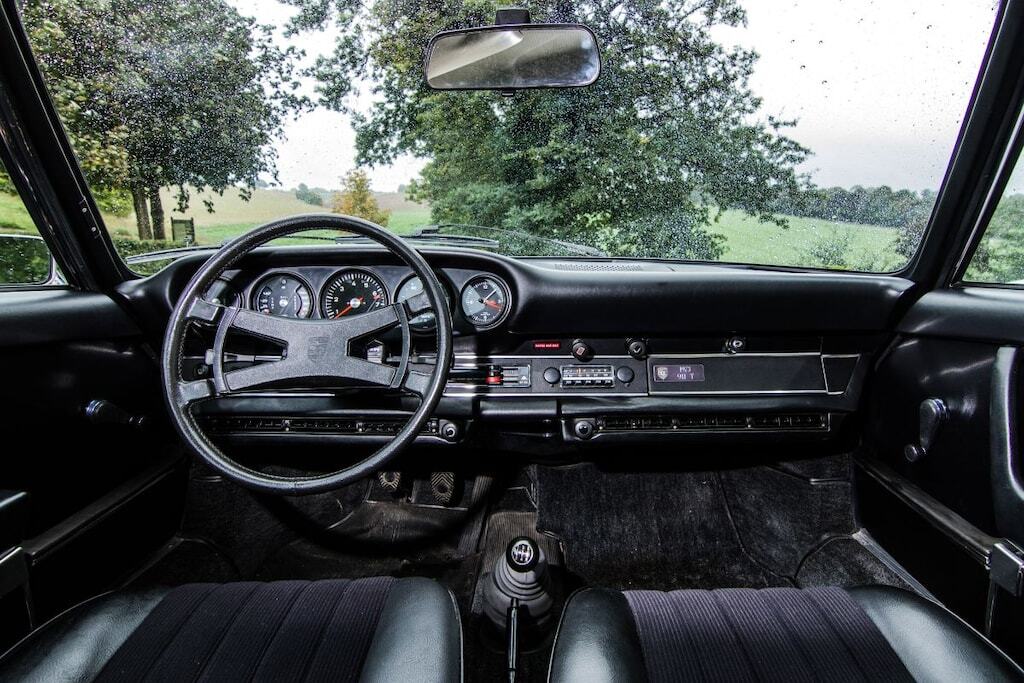
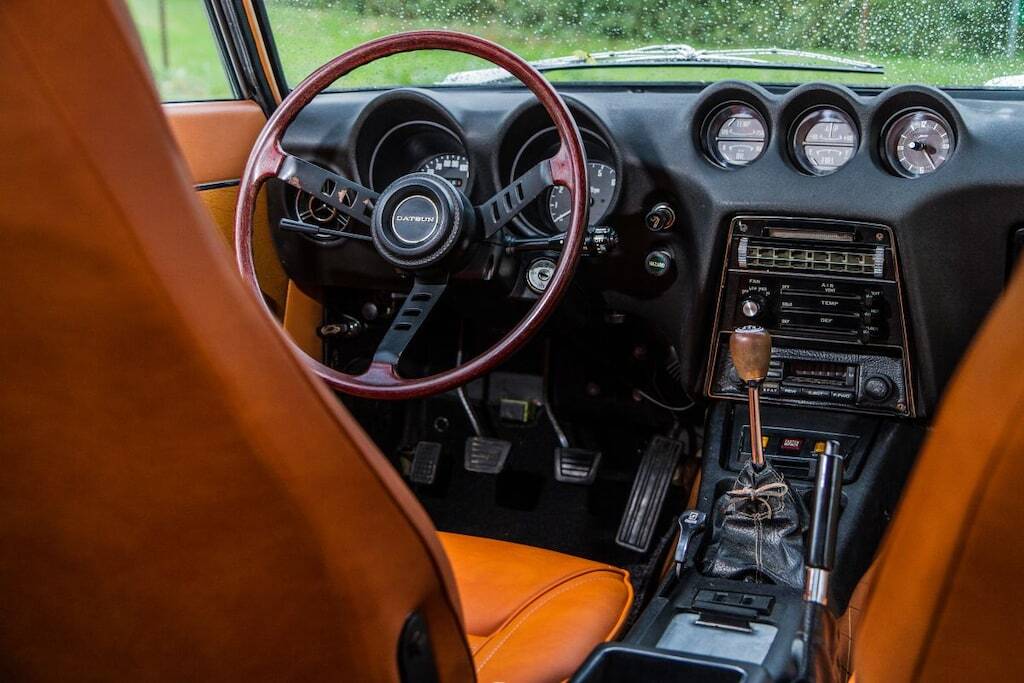
Datsun seems to have a wooden steering wheel
The Datsun seems to have a wooden steering wheel, which is, however, a skillfully wood-decorated lacquered illusion of plastic – a bizarre but entertaining way to keep the cost price of the car low! Just as beautiful as nostalgic are the perforated spokes, which together descend deeply to a proud horn button with the sturdy inscription ‘DATSUN’. Great. A propos, handling and operation: the Datsun is easier to deal with when it comes to finding buttons and switches. Blindly is a big word, but you quickly find what you need. Including the choke that still requires attention for the first kilometer. The 911 is a puzzle for those who don’t know it well. And even then you can forget that the interior heating is regulated with a slider that is hidden between the front seats… Pleasant in both cars is the good all-round visibility. The 911 was always known for this, but the same applies to the 240Z.
Porsche as a classic is worth its hefty extra cost
For the conclusion of this story, we will revisit the starting point of our investigation. Is the Datsun 240Z also nowadays a worthy, cheaper alternative to a Porsche 911T 2.4? In order to answer that question, insight into the current prices for these cars is required; this teaches us that a classic (pre-1974) 911 in top condition will easily cost two to three times as much as a 240Z for which prices of 15 to 20 thousand euros are mentioned. Is the Porsche also worth that? Yes, is the conclusion after an intensive, driving introduction to the two rivals. Both are extremely desirable, that is of course paramount. Remarkable about the Datsun is that the moment came very quickly when I, as an occasional driver, felt completely familiar with the car; the moment when he no longer demanded my attention, the operation became intuitive and I could fully focus on the driving pleasure he offered. There was room to think about the 160,000 happy people who bought a new 240Z at the time and about the current lack of beautiful, original copies. None of them should ever have been thrown into the shredder. Because what a wonderful car it is. Raw enough to still the longing for an Austin-Healey, even though the Datsun is not a roadster. The only thing that could still disturb the dream was the car that he had not been able to keep up with all day. And so this summary also proceeds; the authority you experience in the 911 is no less than overwhelming. Everything that is fun, cool or great in the 240Z makes the Porsche more fun, cooler and greater. The unimaginable effortlessness with which it performs, the excellent build quality down to every detail and, perhaps very personally, the downright masterful symphony that engine and gearbox give the best make the 911 the convincing winner of this duel. That was the case then, and that is still the case. With the Datsun as a great, cheaper alternative. For those who can find one, at least. And that green one? That was sold lightning fast.
The car that the world got to know in 1969 as Datsun 240Z or (in Japan) as Nissan Fairlady Z, was the immensely successful patriarch of a series of sporty offspring. The Fairlady Z had a 2.0-liter six-cylinder, the 240Z built for export had, as its type number already indicates, a block with 2.4-liter displacement. The 240Z remained in production as the original model until 1973, after which the 260Z presented itself as its successor. The engine grew to 2.6 liters and the car was lengthened to accommodate two emergency seats in the back. In the United States, the 280Z was also delivered, not to be confused with the 280ZX, which is considered to be the second generation of the ‘Z-cars’.